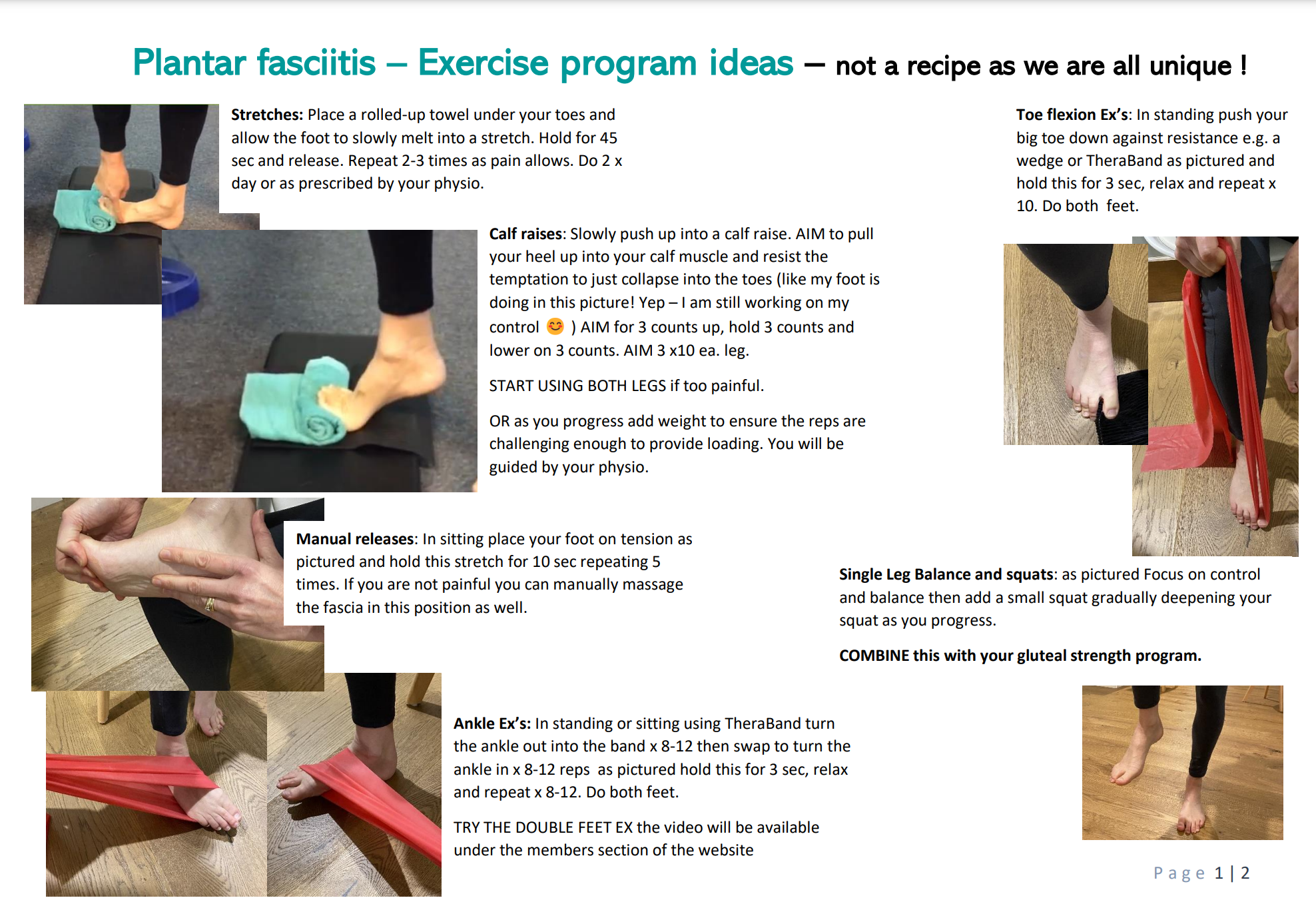Plantar Fasciitis – Part 2 - Home exercise options / ideas
by Sarah Garbellini
Your home program should include exercises also targeting your ‘drivers’ if you have had these assessed and diagnosed. ALWAYS correct your driver before working on your feet biomechanics.
As you read in part 1 of this series - The cause of plantar fasciitis is most often associated with overuse. To recap , we see this overuse pattern from a variety of causes.
You may have had a change in loading on your foot from
function eg increased running loads (distance or speed) or
from weight changes eg associated with pregnancy or gaining weight , or
even changes to your work loads of carrying heavy objects.
Changes in foot wear or foot wear without arch support / tight calf muscles / having flat feet or high arches are also commonly listed as causes and these all fall into the bracket of over use from over loading.
So what are some exercise options?
Improving local fascia and calf length and flexibility – local stretching of your calf needs to include Big Toe extension as pictured. This pre-tensions the plantar fascia and helps assist the functional Windlass effect when we walk. In non-physio speak - the big toe is vital to make our walking efficient and when the timing of toe extension is used well it can also reduce the loading on the plantar fascia and thus reduce your pain. Stretching also can improve blood flow and nutrients to assist healing.
Improve control around the Big Toe – resisted Big Toe flexion is vital for the push off phase of walking or running. Pressing the big toe down against a resistance band or into a firm wedge and holding this contraction is a base level exercise. This will gradually be incorporated into more loaded exercises such as squat and lunges and then into walking and eventually jumping and hopping activities.
Improving calf strength – gradually the calf stretches above will need to be progressed to calf raises with both legs then slowly increasing the load on the affected side and then into single leg calf raises. Single leg balance exercises must be added before this progression and as you improve progress to single leg squats and usually singel leg calf raises around the same time.
Improving ankle control - start gradual tendon loading with resistance band inversion and eversion exercises = turning the ankle inwards against a band and then outwards against a band. This can be done in sitting or standing and with load through the ankle or without. Your therapist will guide you or if you are unsure , start without load and then progress to foot on the floor then progress to standing loads. This will eventually progress to a band around both feet to focus on the heel control against the band. This is a valuable exercise to get right and progress with squats and calf raises. A video can be found on the website under the members section. Your physio can show you the best cues for your feet.
During these phases of rehab concentrate on how you move as a whole person and add any additional exercise to your program – so your exercise program will have some for your foot and maybe some for your shoulders and torso for example. ALWAYS include simple hip and abdominal exercises to your foot program , as any foot pain no matter how small, can change how your brain tells you to move – after all we are hard wired to not hurt ourselves and to find a way to move pain free, so we don’t want you to end up with a sore hip after your foot gets better!


